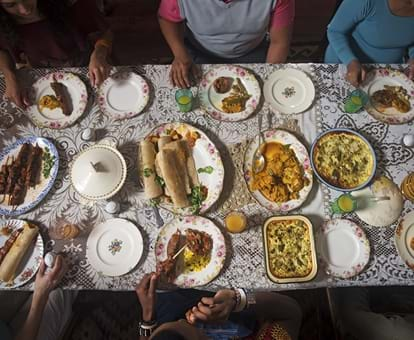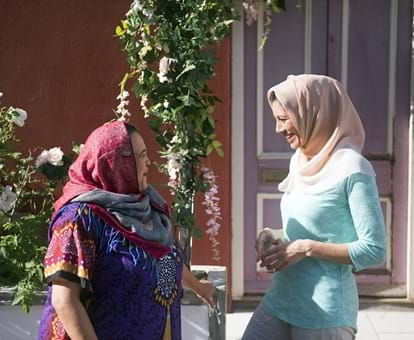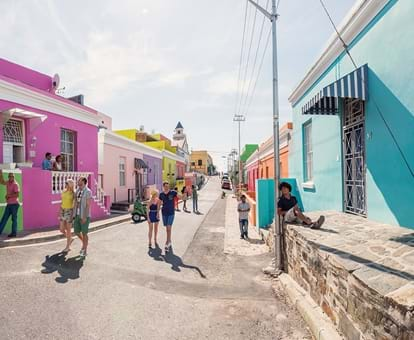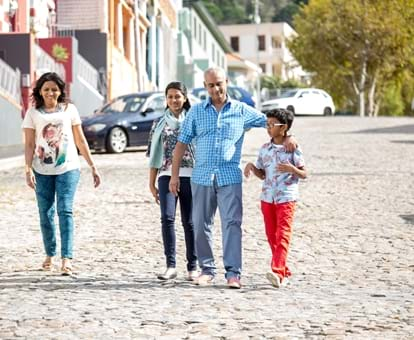By creating an account, I agree to the
Terms of service and Privacy policy
Choose your country and language:
Africa
Americas
Asia Pacific
Europe
TThe Cape Malay community has contributed to the vast tapestry of South African traditions in ways that stretch beyond the first mosques in South Africa and the first tombs of holy men who were exiled to the Cape, which you can find dotted all over Bo-Kaap for instance.
This is a culture and a people who live in Cape Town that do not exist anywhere outside of South Africa. It is a unique, warm and friendly culture. It is the culture of the Cape Malays. And if you visit Cape Town, it greets you wherever you go.
Cape Malays have arguably one of the most distinct and unique societies in the whole of South Africa. The culture is born from a dark and heavy past, burdened by displacement, slavery and slave owners nonetheless, but it has and continues to grow into one of the liveliest, loving and most definitive and indeed one of the oldest cultures exclusive to South Africa.
OOriginally, the Cape Malay people came from Indonesia (at that time known as the Dutch East Indies), among other South East Asian countries, and they were transported here as slaves by the Dutch East India Company. These slaves were the first people in South Africa to introduce Islam as a religion. Their faith followed them from their homeland and so the first practising Muslims in the country were from Cape Town.
The Cape of Good Hope also became an “island” of exiles. It’s where the Dutch sent the outcasts, the banished and the rebellious from the other countries they colonised in the world. Cape Town was literally the Robben Island of the Dutch colonial rule during the 1600s and 1700s.
As the slave trade over the 17th and 18th centuries continued, the Dutch proceeded to bring more and more people into the Cape from different parts of the world - some from India, some from East Africa and even some from places like Brazil and Madagascar. Only, by this time, the uprooted people would not only be met by new land and new legislation, they would also be welcomed by a community of people who knew their journey, who sailed their way to shore before and who had spent a long enough time in Cape Town to form a society and indeed a culture. And this is how Islam spread and the Cape Malay community grew. The souls of slaves, however far and wide they had come from, spoke the same language, felt the same feelings and sang the same songs.
The Cape Malay language is unique to the ear and can be identified as Afrikaaps, an authentic Afrikaans/English dialect born and bred in Cape Town by the Cape Malay and coloured communities over centuries. There’s also the mish-mash of the odd Malay word that has stood the test of time and still gets added into a sentence or two. If someone ever throws the word kanala in your direction, all they’re saying is "please".
TThen of course, there is the contribution that the culture has made towards food. The bredie, the bobotie and the frikkadel are just a few food items that have become synonymous with South Africa as a whole when in fact, it’s in the heart of the Cape Malay kitchen that these meals were born. And the food plays on. As does the music.
Music is the pulse of Cape Malay culture and it keeps traditions moving from generation to generation. It is in the warm and heartening notes of the Cape Malay folk song that you will find a home in this culture as an outsider. The style is unique to Cape Town, the lyrics sad and emotional to echo the feelings of slavery. The songs are still celebrated and sung at Cape Malay choir concerts and competitions and the singing style is one that has not been appropriated or copied in any other culture. The musical style borrows from the East and the West, and musicologists will study its ornate nature for years to come.
But it certainly isn’t all doom and gloom. Every January, the Cape Minstrel Carnival hits the streets, and Cape Town bursts into colour in the way of a street festival and parade where different groups of entertainers from all the Cape Malay and communities in and around Cape Town gather in the city to compete against one another. And here is where the Kaapse Moppie, a comic song with a satirical take on politics, comes to play. The annual event has its roots again in the days of slavery, but continues to maintain an almost holy stature in the Cape Malay cultural events calendar to this day.
Cape Malay culture
IIf you throw your eyes around Cape Town you’ll start to notice the word Batavia a lot. It pops up on buildings, schools, churches in some instances, and even comes up in lights on doors of restaurants. If you listen closely, you’ll hear it in the sad songs and the happy songs. You’ll even taste Batavia on your tongue in the form of spices once foreign to these shores but local to Indonesia. And that’s because Batavia was the name of the Indonesian capital at the time. And, it was also the name of a ship owned by the Dutch East India Company, whose decks were filled with the feet of exiles who have now settled in the Cape, but without ever forgetting to celebrate their journey back home centuries ago - and wherever it may be - in what we know as the Cape Malay culture today.
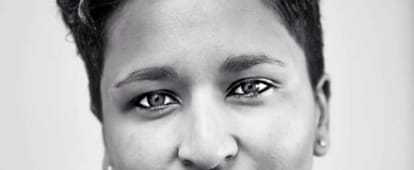
AAbout the author
Haji Mohamed Dawjee became Africa’s first social media editor in a newsroom at the Mail & Guardian, where she went on to work as deputy digital editor and a “disruptor of the peace” through a weekly column. A stint as the programme manager for Impact Africa – a grant-disbursing fund for African digital journalists – followed. She now pursues her own writing full time for EWN and Women 24 with weekly and bi-monthly columns respectively. She also contributes to the Sunday Times and a range of other publications.
Haji’s inaugural book of essays: Sorry, Not Sorry: Experiences of a Brown Woman in a White South Africa, was released in April 2018, and is available in paperback as well as on Kindle.
Related articles

|Terms and conditions|Disclaimer|Privacy policy|Terms and Conditions-Valentines Campaign
